(Written while studying the painting in Greenock, Scotland in the McLean Museum and Art Gallery.)
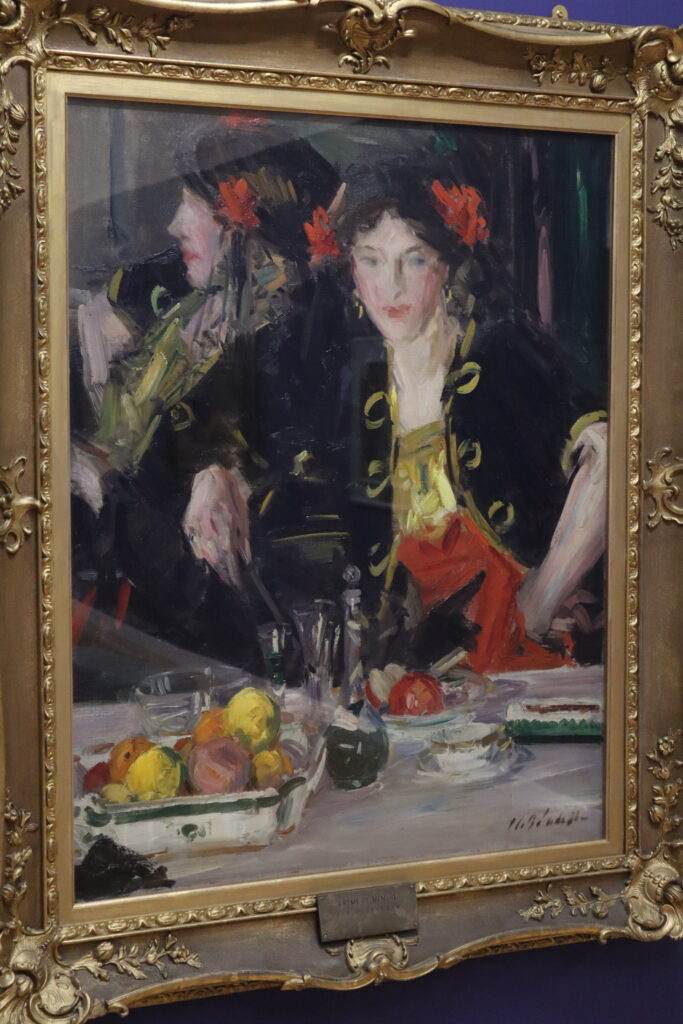
It is a large painting with a focus of interest all around. There is a little glass of green liquid in the foreground, almost within reach of the hand of the subject. So you are being told, yes, very soon she will toss it down. Next to it is probably a carafe of the nimble green liquid. It is noticeable that her eyes are hardly crafted, as if it was not worth doing so, or was this a characteristic of the artist. Was there no personality to capture?
The left arm is pointedly placed. Is she bored, or waiting on something to happen? She has two flowers in her hair, which are seen reflected in the mirror behind her. From the aspect of the painting, however, the second figure is not automatically recognised as a reflection. Cadell painted several paintings which included reflections of the main figure.
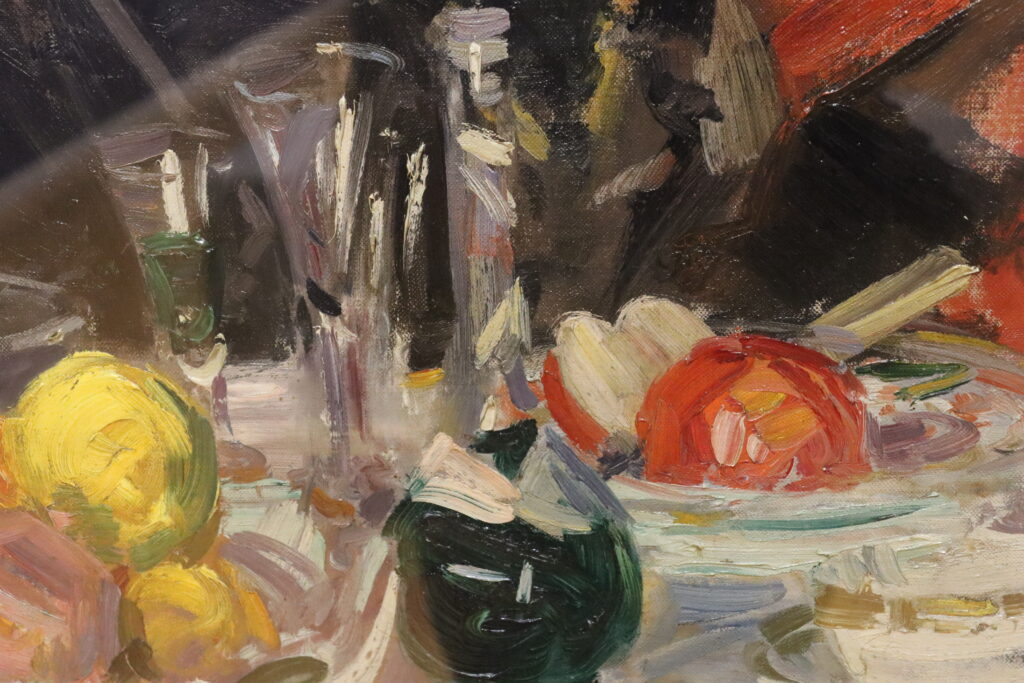
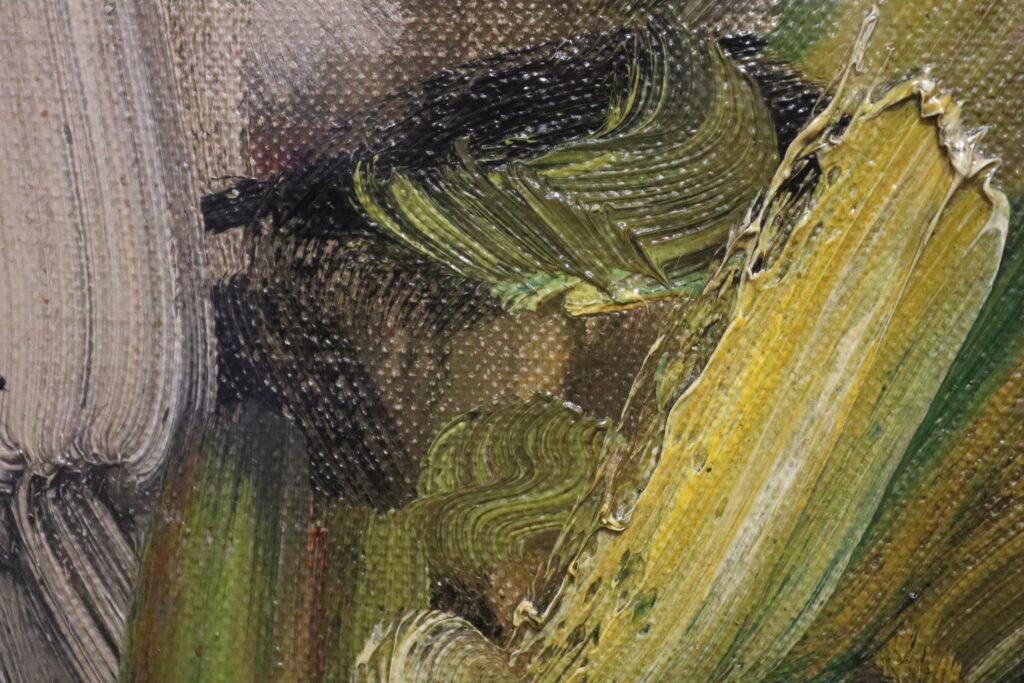
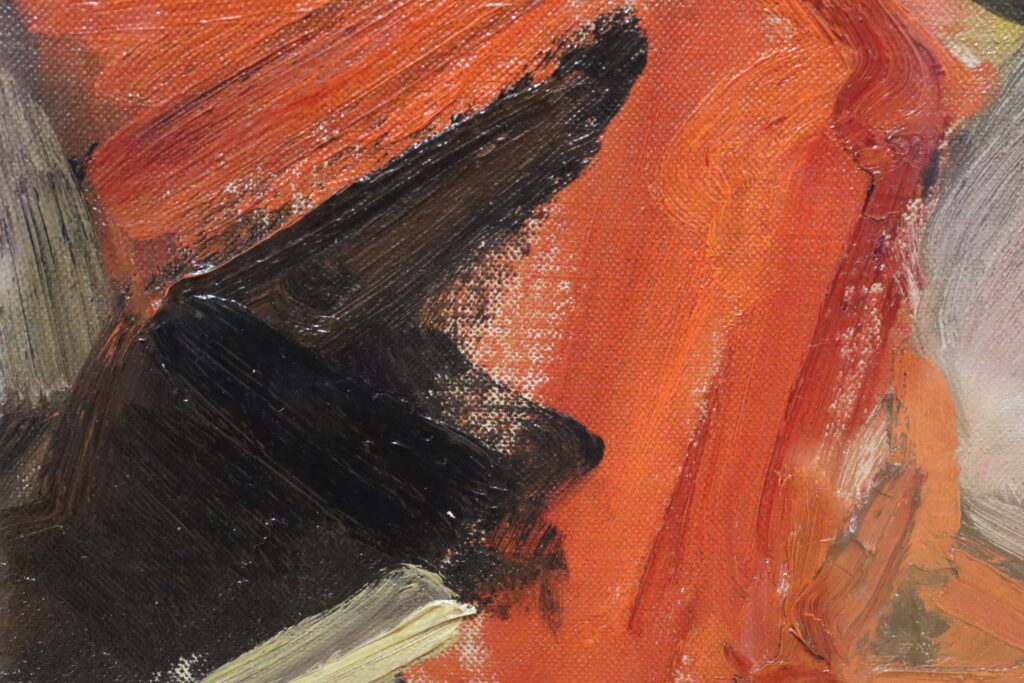
Searching for ‘tentacles’ of information about the artist in trying to unravel the construction and theme, it transpires that Cadell admired things Spanish, through, it is recorded, an interest in the painter Velaquez. The figure, according to one account, is wearing a bull fighter’s tunic and, yes, on closer examination she does disport a pair of large, presumably gold, earrings – a Spanish characteristic. It is likely that the model is Peggy Macrae who modelled for Cadell between around 1911 and 1915 and was a much sought after model in Edinburgh at the time.
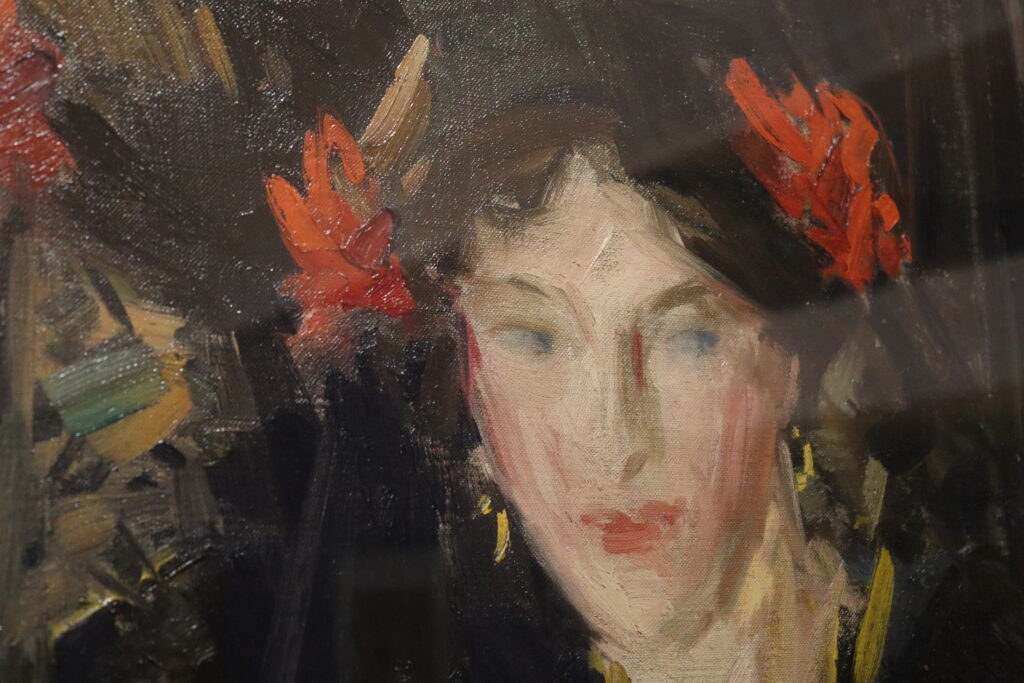
Cadell later that year in 1915 would exchange the comfort and elegance of his Edinburgh residence for the death and destruction of the trenches in France during World War 1. Perhaps he was in some way sustained by thoughts of all the works of art he had previously created and what works he might create in an uncertain future.